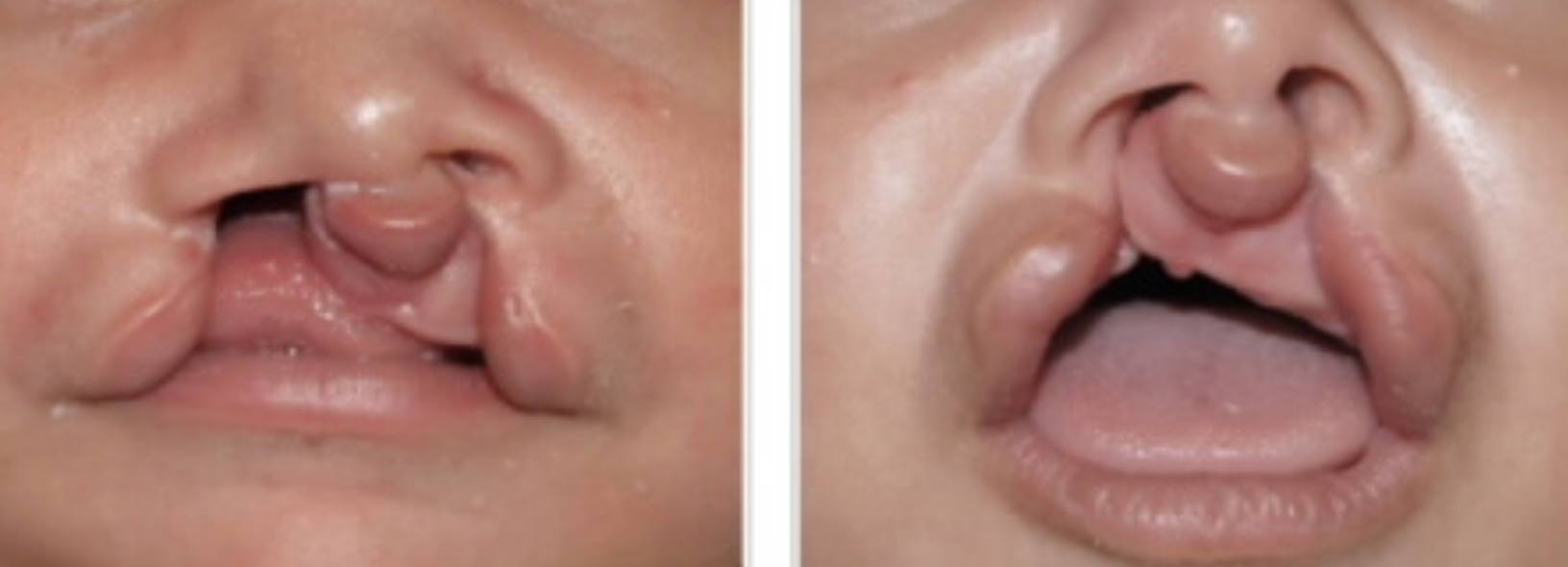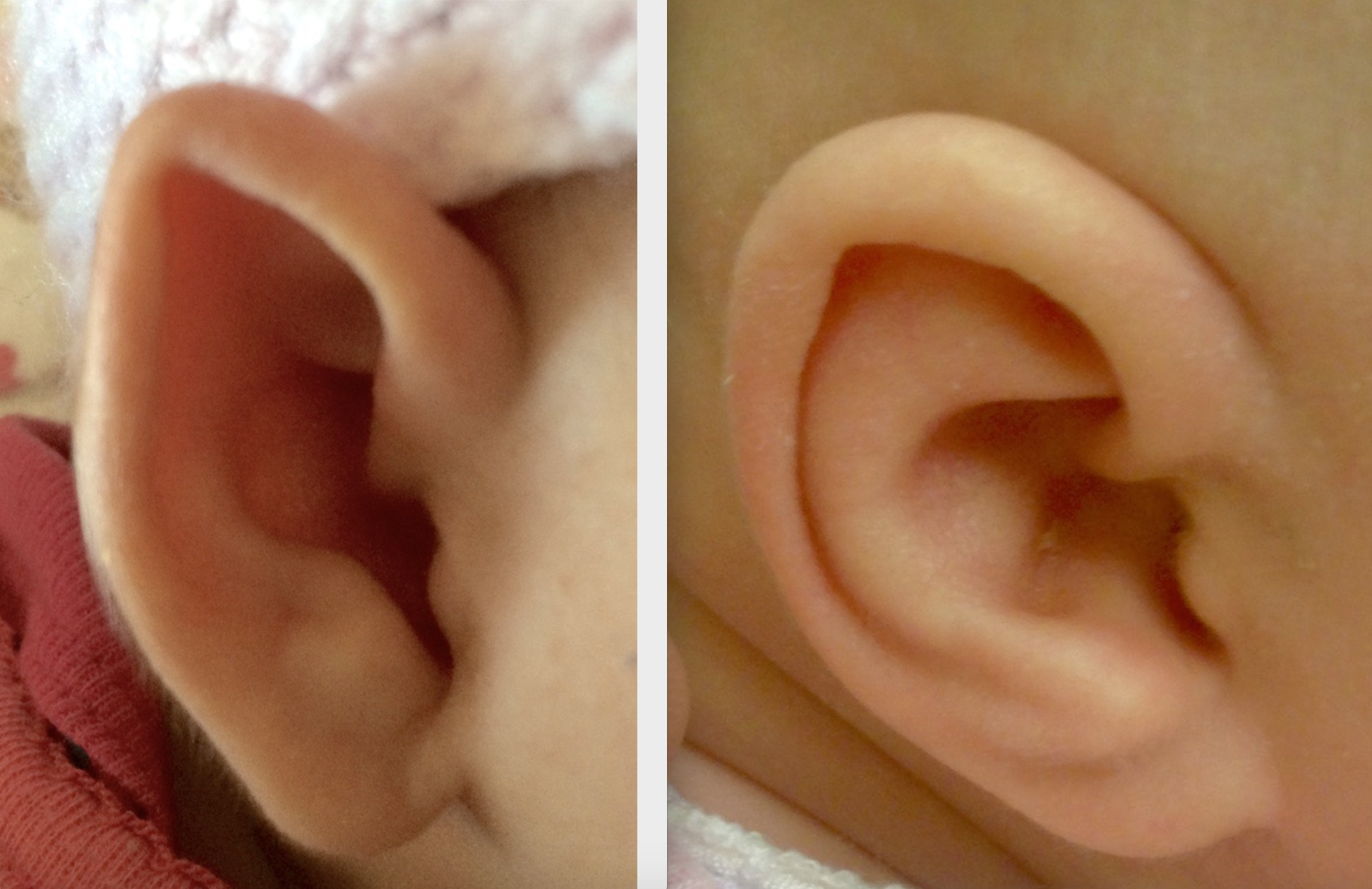What is EARLY CLEFT LIP REPAIR (ECLR)?
ECLR differs from traditional cleft lip repair in its
early timing,
avoidance of nasoalveolar molding (NAM),
and its use of minimally invasive (smaller) incisions and a “no-stitch” technique.
Our patients undergo ECLR when they are at an average of 30 days old — about four months sooner non-ECLR patients — with better outcomes and no additional complications. Our patients have successfully undergone ECLR as early as 10 days of life.
Early timing of eclr compared to traditional repair
ECLR dramatically shortens the waiting period before to cleft lip repair from several months to two weeks.
This enables the feeding, developmental, and psychosocial benefits of cleft lip repair to take place much sooner.
AVOIDANCE OF NASOALVEOLAR MOLDING (NAM)
ECLR ELIMINATES THE NEED FOR NAM
With ECLR, patients and their families avoid the long and involved process of NAM, which requires:
wearing an orthodontic appliance in the mouth for 3-4 months, 24 hours a day (pictured on left)
parental upkeep, including daily cleaning, taping, and monitoring for skin/mouth irritation
weekly visits to the clinic for appliance adjustments
SURGICAL PROCEDURE AND TECHNIQUE
ECLR ELIMINATES VISIBLE STITCHES
E
As with any cleft lip repair, the goal of ECLR is to surgically close the opening in the lip and restore symmetry to the face.
Minimally invasive incisions are strategically placed to lessen the appearance of any scars.
Moreover, a “no-stitch” technique is employed, eliminating the visible stitches that are commonly used in traditional cleft lip repair.
Immediately after the surgery, small molds are placed inside the nose to help support and shape the nasal cartilage. These molds remain in place for 4-6 weeks to aid in symmetric growth.
Photos of a patient undergoing ECLR, taken immediately before surgery with operative markings (left) and immediately after with nasal molds in place (right).
what is the science behind eclr?
In preparation for childbirth, estrogens that are naturally passed from mother to infant help make cartilage in the baby’s body more flexible. This allows for an easier passage during the birthing process.
During the first month after birth, these hormone levels are still high within the newborn’s system. ECLR takes advantage of this brief period of increased tissue pliability to help shape the lip and nose area. This is the same logic behind common reshaping techniques such as nasoalveolar molding (NAM) and neonatal ear molding, which are effective because of they begin early in infancy.
What are the benefits of ECLR?
less scarring
Earlier surgical repair takes advantage of the newborn’s unique ability to grow and heal.
early intervention
Instead of delaying the repair and allowing the cleft to continue growing, ECLR stops the deformity from progressing.
no need for NAM
ECLR eliminates the burden of NAM, including the inconvenience of biweekly appointments and wearing an appliance for several months.
better symmetry
ECLR takes advantage of the natural malleability in newborn tissues, giving an excellent surgical result. This may eliminate the need for future “touch-up” surgeries when the child is older.
improved feeding
Once the cleft lip is repaired, feeding becomes much easier which can allow for faster weight gain and growth.
Psychosocial gain
Socialization increases after cleft repair, which is essential in the early stages of infant bonding and development.
Is eclr Safe?
Yes. To date, we have treated over 200 infants safely and effectively with ECLR at our nationally renowned pediatric medical center.
Our team includes highly experienced pediatric anesthesiologists who have developed a specific anesthetic protocol for our patients under 30 days of age. This protocol, which is based on the most up-to-date scientific findings and recommendations, has been safe for all of our patients.
Is eclr right for my child?
We offer individual electronic consultations to patients and families interested in ECLR via our “Contact Us” page.
In patients for whom ECLR is a suitable treatment option, we recommend it as the best course of action.
our eclr research
Our Early Cleft Lip Repair (ECLR) program is the direct, hard-earned result of scientific research. As the only program of its kind in the country, it is powered by a mission to improve surgical treatment options and outcomes for children with cleft lip.
To continue along this path of innovation, we incorporate ECLR patients into our ongoing research studies whenever possible. It is our hope that by remaining actively engaged in research, we can further grow and refine our ECLR program, benefiting future generations of young patients.















